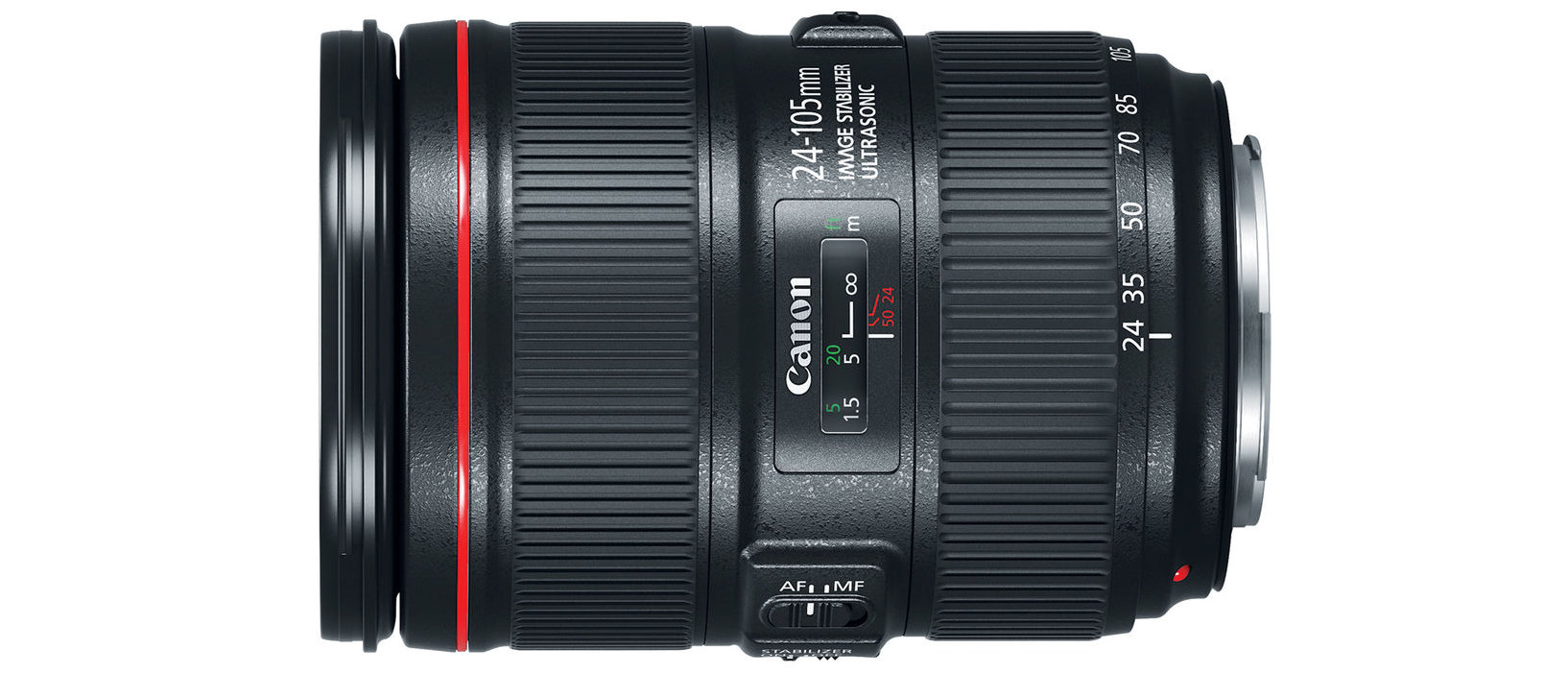Digital Camera World Verdict
The original edition of this lens was something of a kit zoom classic but left plenty of room for improvement. With its redesigned optical layout, improved build quality and uprated image stabilizer, the Mark II is a much more appealing proposition and pretty good value at the price.
Pros
- +
Improved image quality
- +
Enhanced optical stabilization
- +
Weather-sealed construction
Cons
- -
Mediocre long-zoom sharpness
- -
Pricier than the equivalent Sigma
Why you can trust Digital Camera World
Upgraded and uprated, the Canon EF 24-105mm f/4L IS II USM picks up the baton from the first edition, which was launched back in 2005. The original was available as a ‘kit’ zoom option with the first three editions of the EOS 5D, as well as the 6D. However, it wasn’t sharp enough to make it onto Canon’s approved list of lenses for use with the high-resolution 5DS and 5DS R, unlike the revamped Mark II edition, launched in 2016.
Specifications
Mount: Canon EF
Full frame: Yes
Autofocus: Yes
Image stabilization: Yes
Lens construction: 17 elements in 12 groups
Angle of view: 84-23.3 degrees
Diaphragm blades: 10
Minimum aperture: f/22
Minimum focusing distance: 0.45m
Maximum magnification ratio: 0.24x
Filter size: 77mm
Dimensions: 84x118mm
Weight: 795g
Key features

Top of the agenda for the Mark II was a redesigned optical path, which also gains high-tech ‘Air Sphere Coating’ for keeping ghosting and flare to a minimum. Keep-clean fluorine coatings are added to the front and rear elements, and the build-quality has been enhanced for greater resistance to vibration and shock. The image stabilizer is also improved, rising from 2.5-stop to 4-stop effectiveness, also adding automatic panning detection. As you’d expect from an L-series lens, it comes complete with weather-seals and a hood.
Naturally, this lens is an f/stop slower than Canon's EF 24-70mm f/2.8 lenses for full-frame SLRs and mirrorless bodies but gains a useful extension in telephoto reach, while also beating the Canon EF 24-105mm IS STM by an f/stop at the long end of the zoom range.
Performance
Sharpness is better than in the original edition, especially at short to medium zoom settings, but drops off noticeably at the long end. Bokeh remains smoother when stopping down a little, helped by the new 10-blade diaphragm. Another significant area of improvement is in barrel distortion at the short end of the zoom range, which was notoriously bad in the original edition of the lens.
Lab results
We run a range of lab tests under controlled conditions, using the Imatest Master testing suite. Photos of test charts are taken across the range of apertures and zooms (where available), then analyzed for sharpness, distortion and chromatic aberrations.
We use Imatest SFR (spatial frequency response) charts and analysis software to plot lens resolution at the center of the image frame, corners and mid-point distances, across the range of aperture settings and, with zoom lenses, at four different focal lengths. The tests also measure distortion and color fringing (chromatic aberration).
Sharpness:
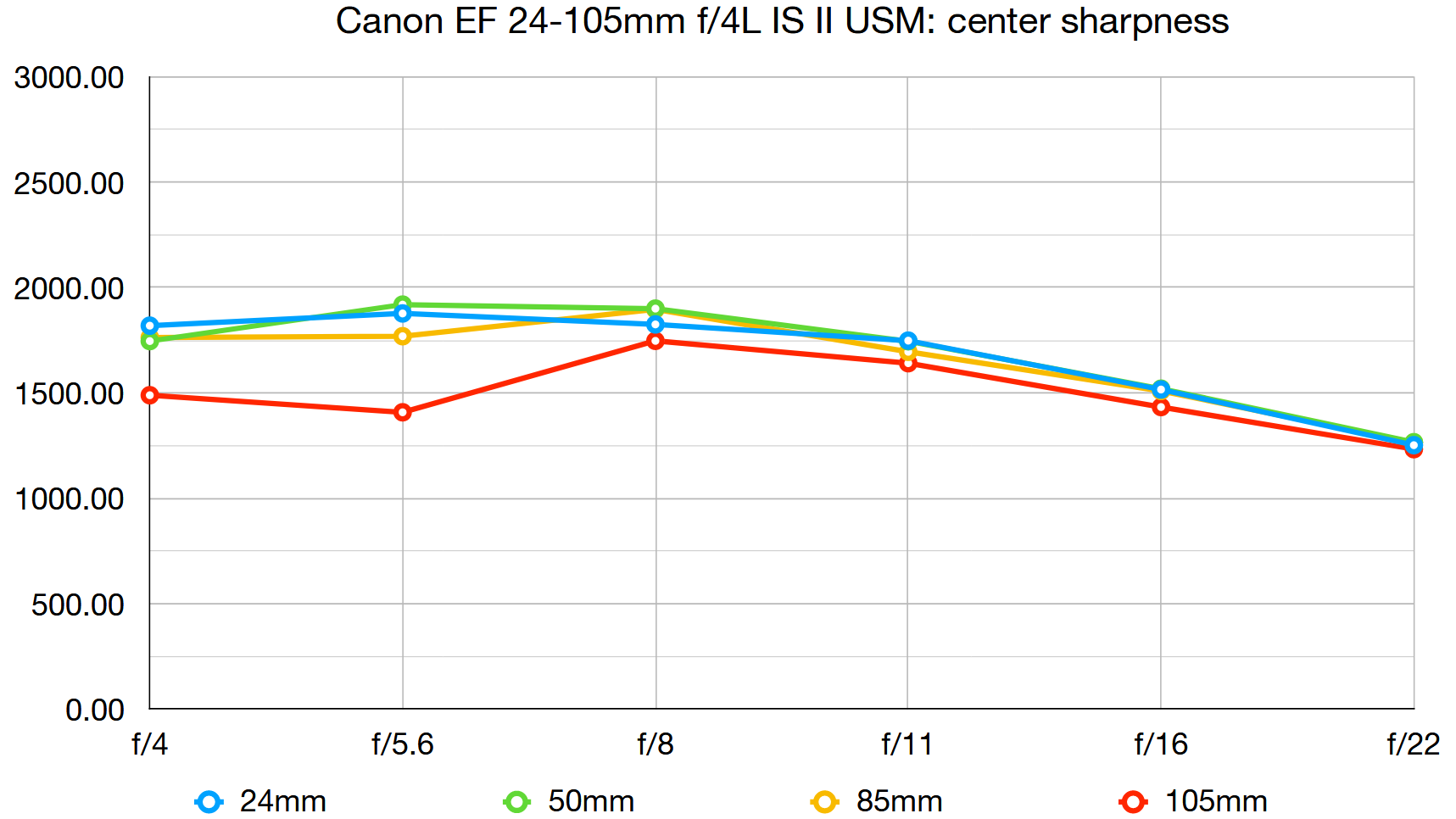
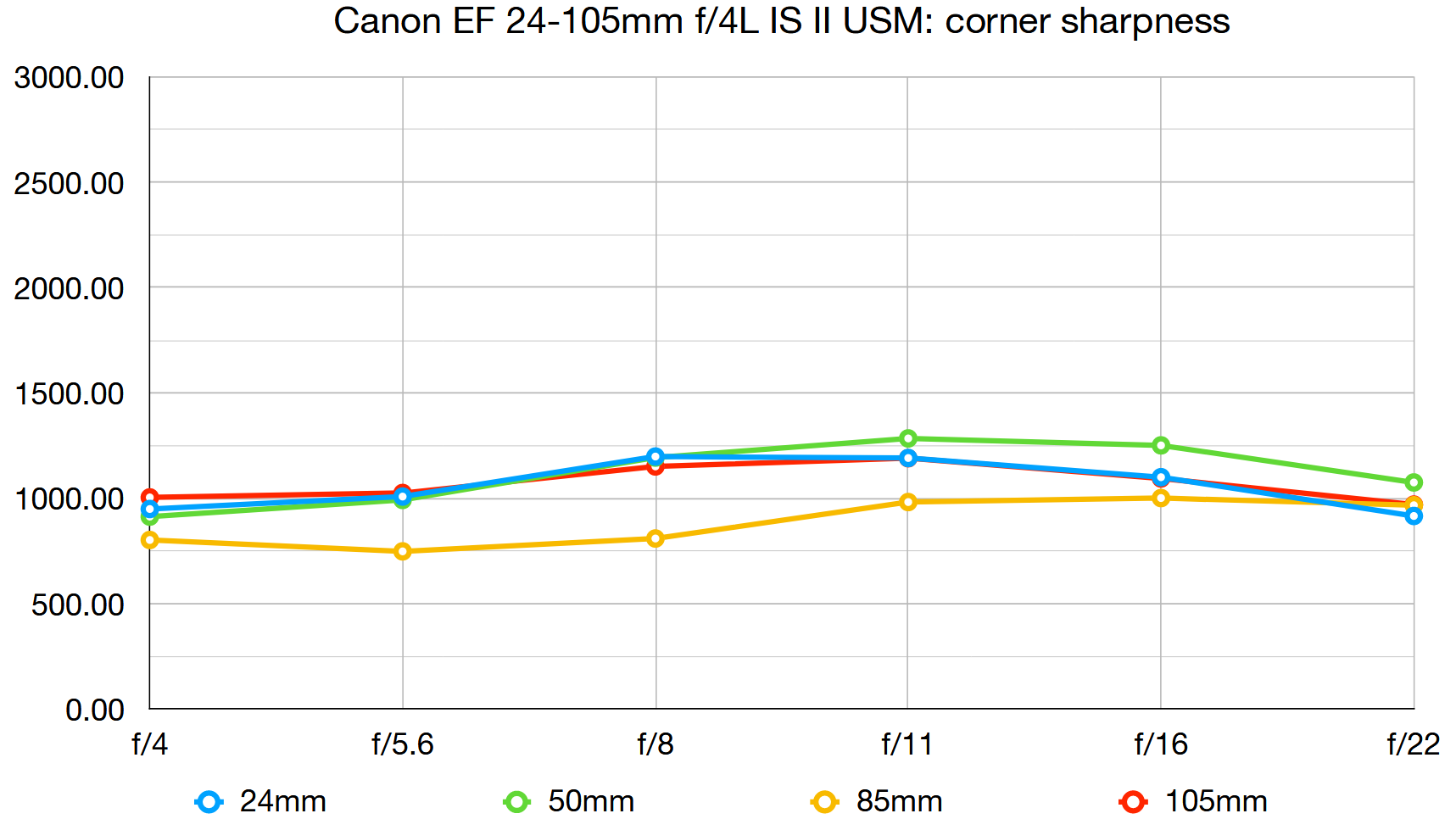
Centre-sharpness is very good at short to medium zoom settings but drops off noticeably at the long end, at apertures wider than f/8. Levels of edge-sharpness are good rather than entirely great throughout the zoom range.
Fringing:
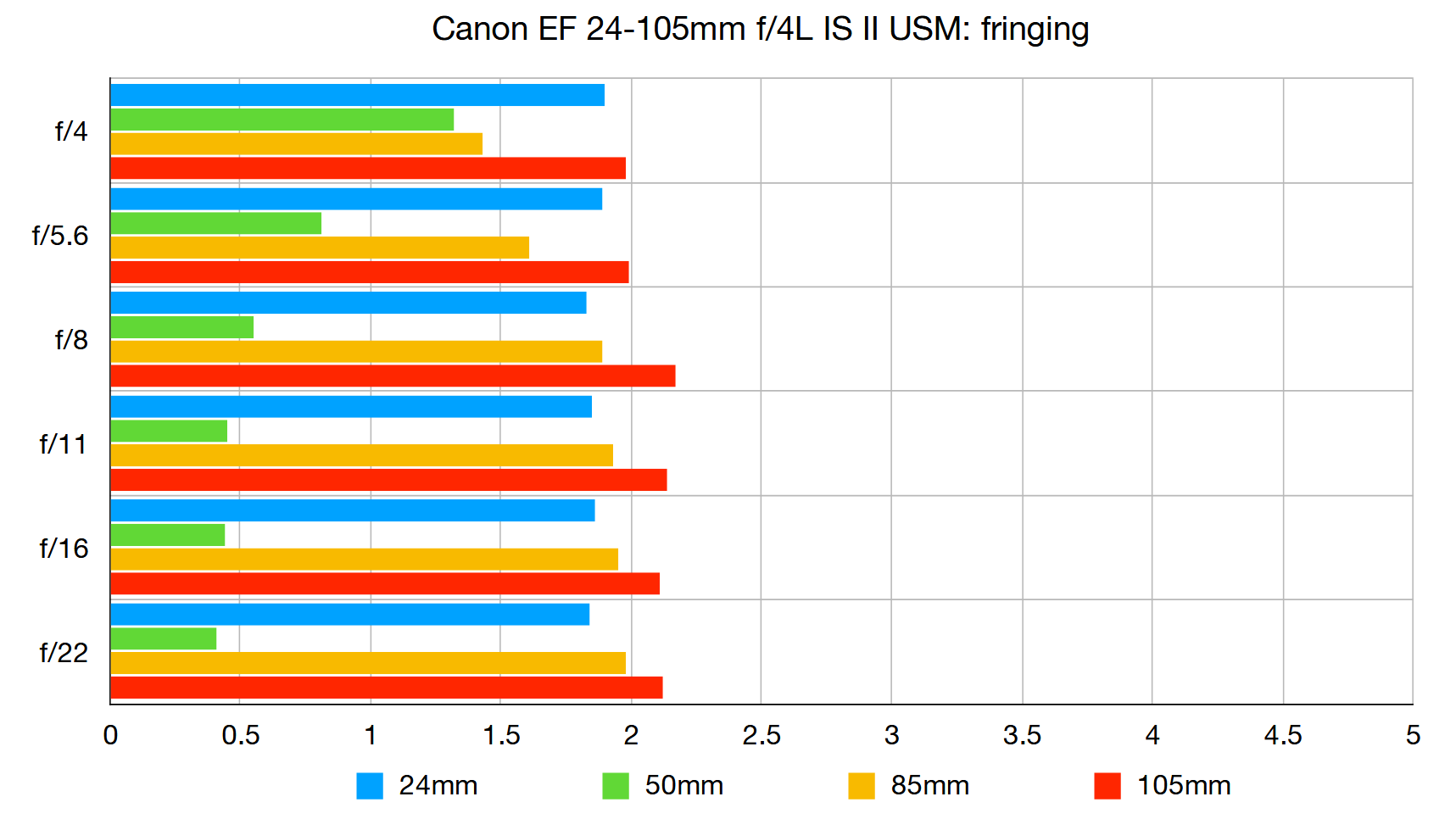
Color fringing can be noticeable at both the short and long ends of the zoom range but is very negligible in the mid-zoom sector.
Distortion:
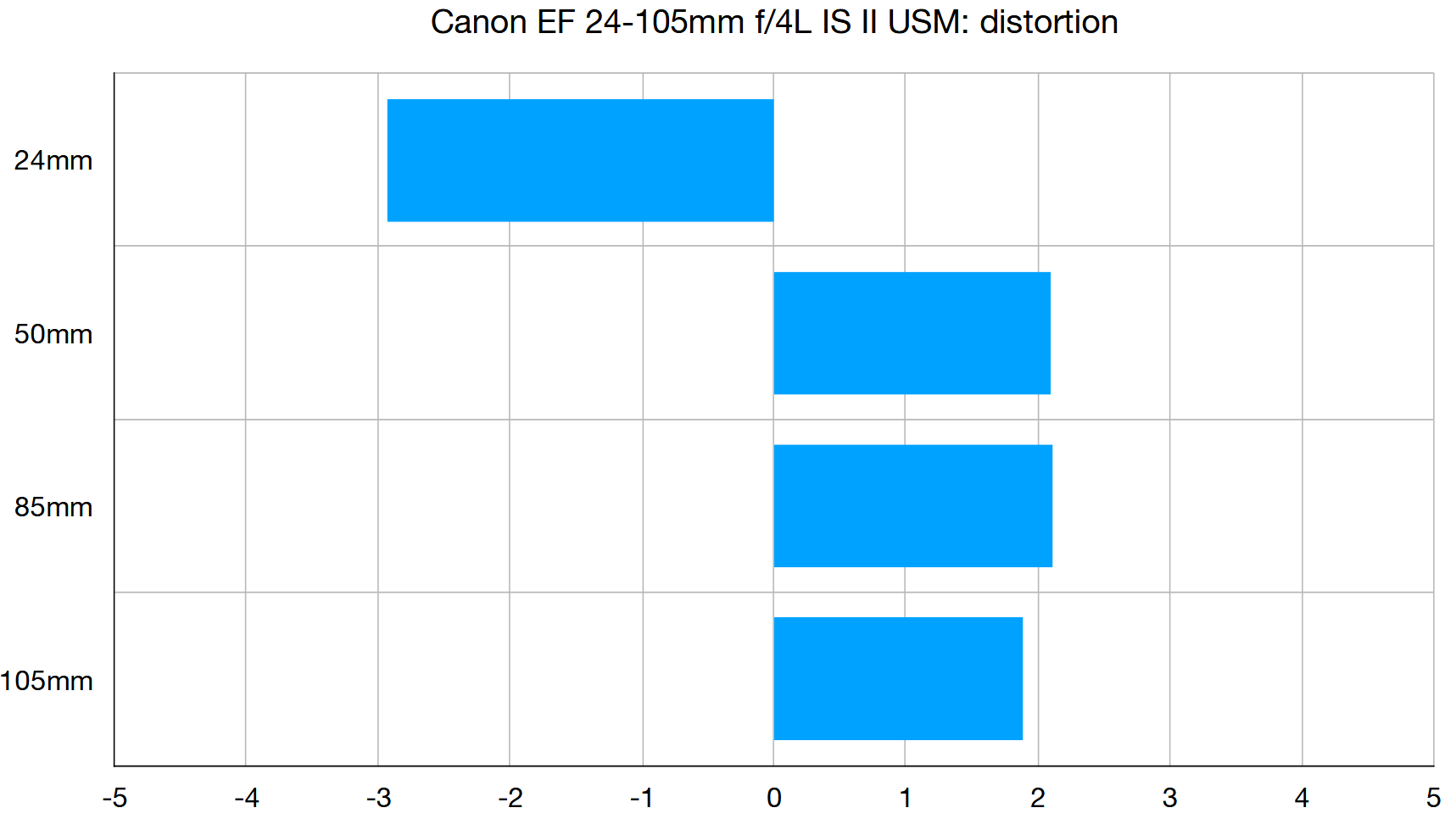
The amount of short-zoom barrel distortion is much reduced compared with the original edition of the lens, and pincushion distortion is fairly well controlled at the long end.
Verdict
There’s little to choose between this lens and the directly competing Sigma 24-105mm f/4 DG OS HSM Art, in terms of image quality and all-round performance. One major difference is that the Canon lens features weather-seals, which are lacking in the Sigma, and the Canon edges ahead for edge-sharpness. However, the Sigma is rather less expensive to buy.
Read more:
Matthew Richards is a photographer and journalist who has spent years using and reviewing all manner of photo gear. He is Digital Camera World's principal lens reviewer – and has tested more primes and zooms than most people have had hot dinners!
His expertise with equipment doesn’t end there, though. He is also an encyclopedia when it comes to all manner of cameras, camera holsters and bags, flashguns, tripods and heads, printers, papers and inks, and just about anything imaging-related.
In an earlier life he was a broadcast engineer at the BBC, as well as a former editor of PC Guide.
